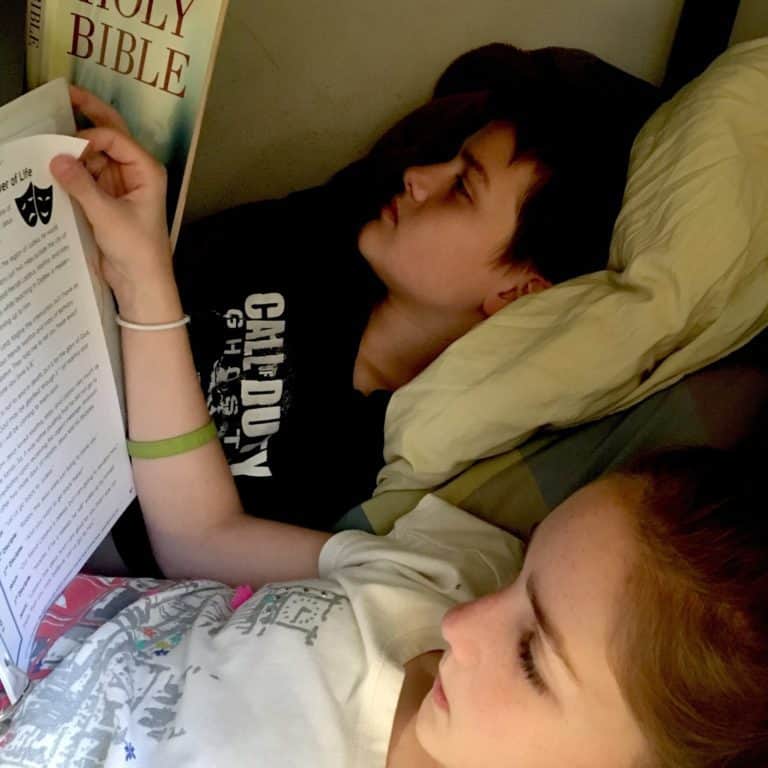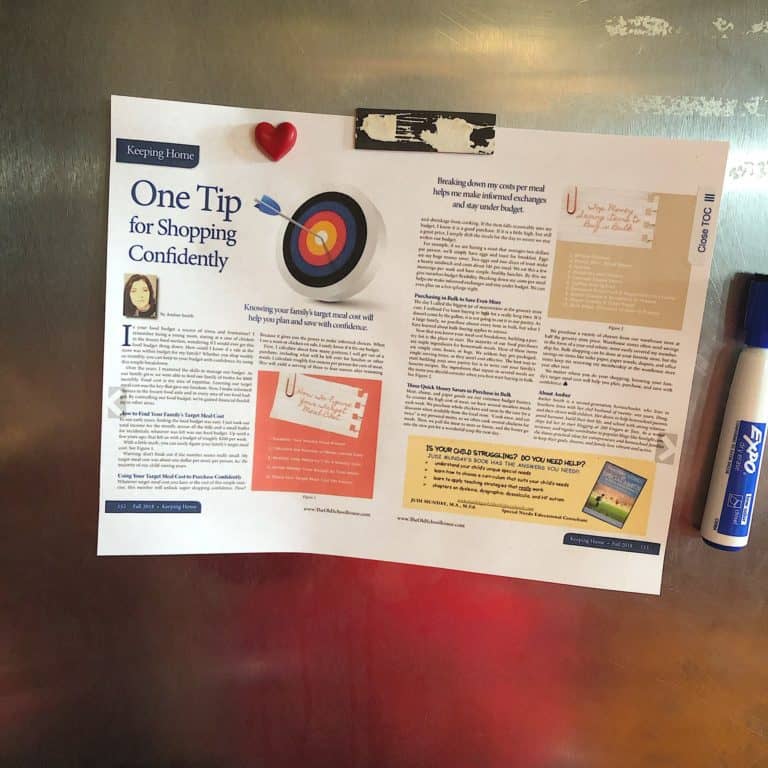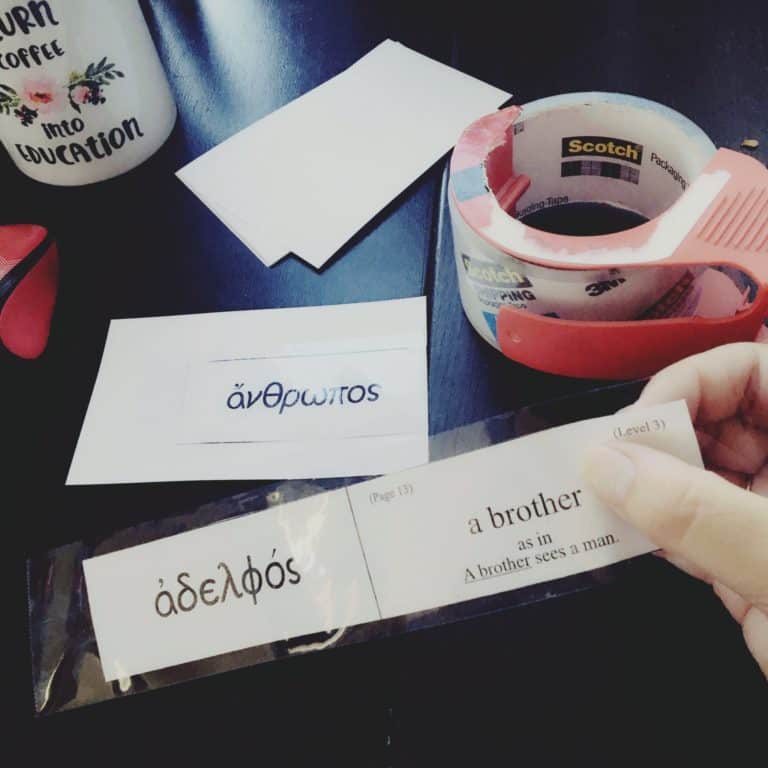How To Homeschool Multiple Grades At The Same Time
We may earn money or products from the companies mentioned in this review or post, but all opinions are our own.
Our blog’s name, 200 Fingers & Toes, is a testament to our unique challenge in homeschooling a house of ten kids. Yes, you read that right. Ten kids. Planning a homeschool day for such a diverse range of ages is no small feat. The older children have a more significant academic load, and the younger ones have unique needs that must be met. But, the truth is, you can have a successful day as you homeschool multiple grades, even if you’re essentially running a small K-12 school.
A Multi-Age Homeschool Schedule
As an experienced homeschool mom of a large family, I’ve learned that each family must find its own rhythms and routines. The key to success in homeschooling is finding what works best for your family.
Let me give you a glimpse into a year of homeschooling all ten kids. In this example, all ten kids were actively engaged in academic learning, a testament to the success of our homeschooling journey.
The younger children were in K, 1st, 2nd, 3rd, 4th, and 5th grade. The Middle schoolers were in 7th and 8th grade. Finally, a group of high schoolers were in 9th, 11th, and 12th grade.
Your Home is Perfect to Homeschool Multiple Grades
Our real-life experience taught us that the homeschool setting is the best way to teach different ages of children working at different grade levels. So read more for our best tips for homeschooling with the whole family.
Make the most of your space. We have changes our schooling area almost every year. The needs of our family change with each additional child, baby and NEW student.
We gave up our master bedroom to make it into the school room. It was a full scale library for many years. Use your space to the best of your abilities and get creative.
For many years the baby dictated the school hours. When they little ones got older they played in a pack and play right along side of the other kids in the school room. They moved from there to the play saucer and then off to a nap after they were fed. I made sure to have a comfy chair for myself so I could read to the kids while I read aloud to the other kids.
Choose Your Schedule
Our school day begins with a family meeting at 10 am. Everyone does their chores, eats breakfast, and takes care of their personal needs before school starts. We have used every variation of schedule from year-round to four-day school weeks, You can always change to fit life as it changes, and it will!
The elementary kids usually get up early, have time to play, and burn off some energy, while the teens generally roll straight out of the kitchen at ten sharp! The later start time gives me time to care for the little ones’ needs.
If you have a newborn, this gives you plenty of time for morning feedings and runs right up to the first nap time. When we had mostly younger children, we did school as soon as the littlest ones went down for a nap.
On a side note: we continued quiet reading time while we homeschooled multiple grades. When littles napped, the oldest kids did their reading. It gave ME a calm space to regroup and taught the kids to be comfortable in silence. The side benefit is that the older kids became avid readers because of this habit.
Break Your Multi-Age Homeschool into Groups
After our Morning Time Meeting, the day starts with me doing bookwork with the young children. Individual reading lessons take about 15 minutes each, including the handwriting in Teach Your Child to Read in 100 Easy Lessons book.
The older siblings check their lesson plans and follow the schedule in the Sonlight binder. They do their assigned reading and get on the computers for Math right while I am working with the little kids.
When I finish lessons with the little ones, I have one-on-one time with the middle schoolers. We go over their schedule, read assignment instructions, and confirm a clear checklist for the day.

What Are We Using as a Big Homeschool Family?
The oldest (Sr. 17, Jr. 16, Soph. 15) are the “Bigs,” serving as the leaders and role models for the rest of the homeschooling group
They are using their 5th high school core (400) and are graduating. The two youngest will have one math credit left to complete. They chose to dual enroll at the local high school to take AP and online college classes.
You will see that their ages is a stretch of the “advised” age span. All I can say is do what works. Our youngest was a bright girl who was reading and writing before four. Even though she was out of the advised age range, she would not be shaken from joining her brothers’ school time. We tried to ditch her. She was so fiercely competitive when she was younger that she forced herself to keep us. Her strong writing and language skills are to be credited for completing five high school cores at fourteen and attending university before she could drive.
They have already completed HBL 100, and we combined Sonlight HBL 200 and 300 last year because I did not want to skip church (200) history. The past year was a massive workload, with hours and hours of reading, but we are all glad it is behind us. Their reward is a mountain of high school credits that they earned.
Do you have an advanced student that is longing to be unleashed?
Our oldest daughter was living on the University campus before she could legally drive. You know your child and can gauge their maturity, graduating early is not for every advanced student, but you can read more about how to help your student graduate early.
Be Willing to Make Changes
My 8th grader (14) was not an excellent fit for Sonlight
Multi-grade homeschool does NOT mean one-size-fits-all. There is always that one kid that makes you dig a little bit deeper, work a little harder, and maybe cry more in the shower.
Rest your heart if you are in those years right now. As homeschooling parents, we all experience students who challenge our current curriculum choices. My middle son was not a strong reader, and Sonlight’s load in the early HBLs was too much reading for him to stay on task. We found our way and still use the Sonlight by keeping the Language Arts Readers as assigned reading for him.
Make school time meaningful to your student. We chose to connect with what he loves in his independent work time. He is my computer kid. He has been in love with the beeps and flashes of a screen since he was little.
This year, we ordered KidCoder from Sonlight to help him gain fundamental hands-on computer knowledge during his unit studies. For the rest of his school day, we use a combination of online classes from Discovery K12 and Schoolhouse Teachers.com. These online platforms have been a lifesaver. I was desperate to get this kid to love learning, and choosing a different direction has been a great way to meet his needs.
He is digging back into school work and telling me what he reads in his lessons. With an active kid like him, I ensure we remember to get outside by including a nature study and adding field trips to our calendar. Those adjustments are making a huge difference in his attitude.
Homeschool Multiple Grades By Taking More Time to Cover the Material
My next Group (7th-12, 5th-11, 4th-9) the “Middle-Littles”
We are using HBL D/E Condensed and taking our time. With a large group, we might stretch it over a year and a half. There is a ton to do in the condensed HBL plan—plenty to keep an older kid busy independently.
The Hands-on History boxes are an excellent resource for your morning basket or quiet reading time. The kids can work on a project while I work with the older kids or check individual work with a sibling. We are jumping into the computer a bit more to search for facts.
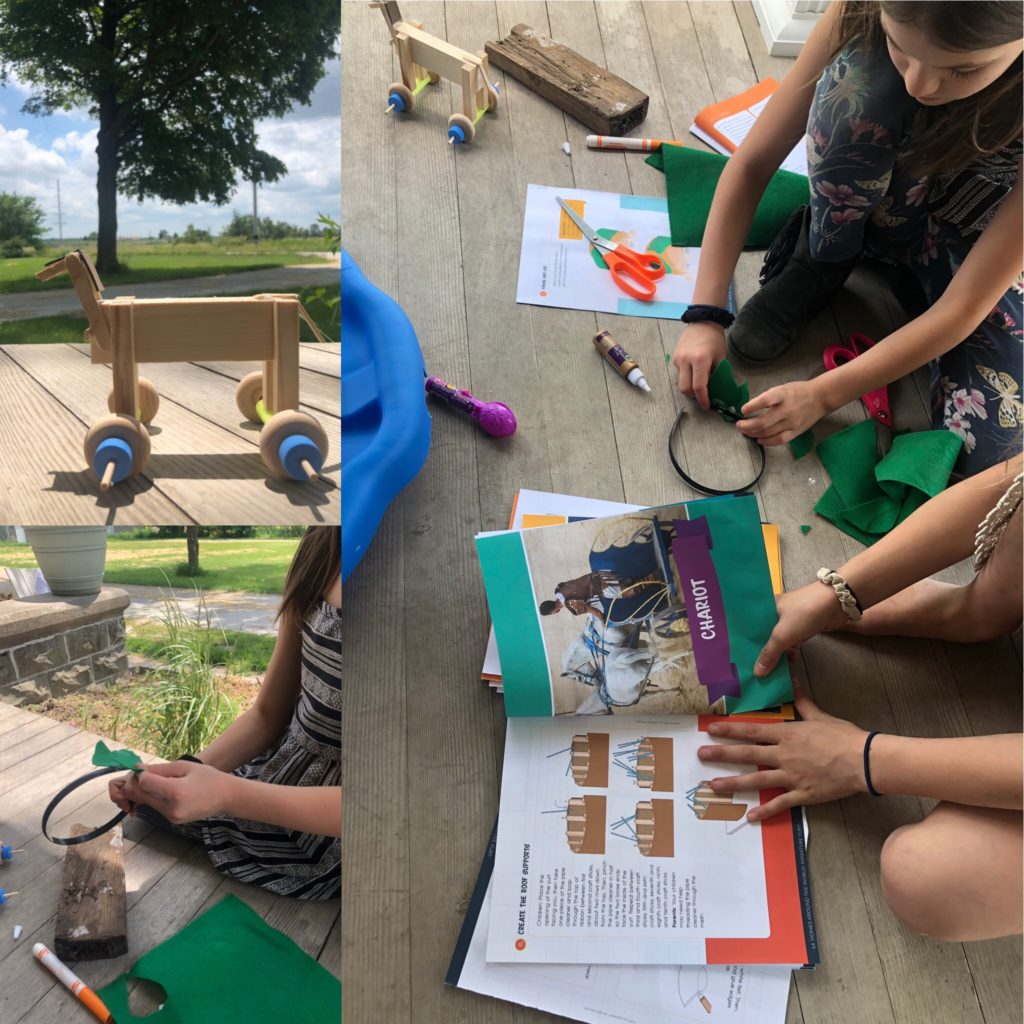
They are also exploring some elective classes on SchoolhouseTeachers.com to supplement their afternoons when I check out the older kids. I encourage independent learning time in the afternoons and am on the lookout for games or kits to help them explore individual interests throughout the school year.
Sometimes, I forget that one of the main reasons I chose to homeschool was that I wanted my kid’s education to look different. Homeschooling allows me to individualize and meet different students’ needs.
Then the “Littles” are K-age 5, 1st-age 6 and 3rd-age 7
Again, this group will probably need some adjusting down the road, but while most of the reading is on me, I choose a broader age range than is typically recommended to keep my groups down to a minimum. The truth is that no matter what the recommended age on the box is, you must make the curriculum work for your family.
If you love your curriculum, could you make it fit you?
That is what we have done here. They use HBL B; everyone is finishing Teach Your Child to Read in 100 Easy Lessons. This book is my FIRST school book for everyone. I have taught every child to read using that same book, so it is by far the best $25 I have ever spent. A few weeks ago, I bought a replacement copy for $2 at the half-price bookstore; and I could not have been more excited if they were passing out free cappuccino.
We do a little reading and bookwork in the morning. They copy their reading lessons, do a little math, and then we do life together. They learn a ton just by being around everyone else, learning, and reading.
Homeschooling a Large Family Can Be Affordable
Each additional child brings a new element to our school—and more expenses. However, homeschooling can be affordable for families of any size.
We used many hacks to save when the kids were little.
- I always checked the reprinting permissions on workbooks, ensuring I could reproduce copies for our immediate family members.
- I often purchased the digital version and only printed copies of the needed pages.
- We used page protectors and wipe-off markers to extend the life of worksheets that could be used for practice.
- We also did tons of drills out loud. This tradition was passed down from my homeschooling mother. She thrilled my younger siblings with “Skittle Drills.” Every child got a chance to answer questions at their skill level for a candy prize.
- Listen to the podcast episode HERE about How Every Child Can Get a Great Education By Homeschooling.
- Another cost-saver for our family is that we can learn together by reading great books. Reading out loud together means that even though we have more grade levels, our school takes the same time to complete.
- By reading together, I can also be a hands-on homeschool mom. I never desired to have my kids in front of a computer all day.
- Don’t feel bad for passing up digital learning and games. The truth is that we could not afford the majority of online offerings when we began homeschooling.
- Search for deals and discounts. I bought our curriculum second-hand from Ebay for years.
- When we found a curriculum we loved, we prioritized purchasing it in our budget.
- We set aside our tax return for homeschool expences.
Suppliments and Workbooks
Now that the kids are older and we are reusing Sonlight HBLs for the second and even third time with the younger children, we have added a few online and supplimental resources.
Because we have a multi-age homeschool, for Math in the upper grades, we use Teaching Textbooks because, seriously, who could grade all of that and still even be a human? We are trying Life of Fred for the first time, but I’ve been inconsistent. My favorite math recommendation will always be Singapore Math for elementary grades. It prepared our younger kids to think mathematically.
We use workbooks for LA because I like to keep my older students busy when I am working with others. A couple of workbooks fill the time when I read to either of the younger groups. We loved Keys to Good Language and Grammar Ace from Sonlight and Spectrum Series LA books.
Tracking paper work is a HASTLE in a multi-grade homeschool. I like workbooks for their ability to keep papers in one pace. We just received a copy of Apologia’s Reader in Residence, and you can read the full review HERE.
Choose a Four Day Schedeule for Electives & Science
Lastly, God Bless my Mother, who has taught high school Science with Apologia for the last two years. It has been a huge help to lift one class off of my list of responsibilities. This would be a great setup if you can trade with a friend. Science is a topic that can easily be taught over a broad age and grade levels.
We do science on Fridays. Moving science to one school day and using the four-day schedule helps streamline our week without changing our daily routine too often. The kids like working in one subject area for longer lengths of time so they can focus and get the work done in one session while the information is fresh. Plus, they love the labs.
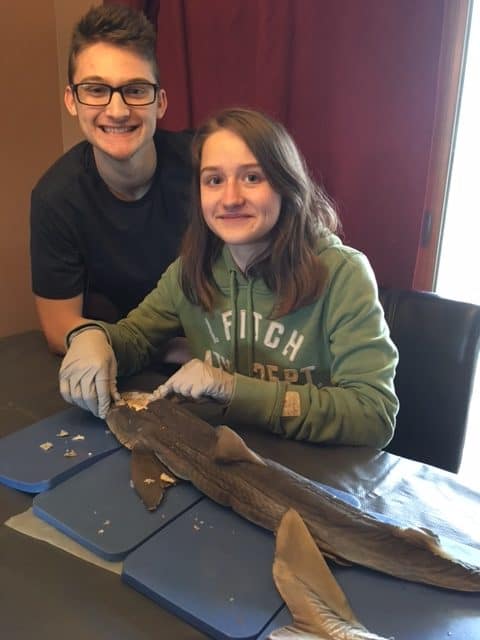
Every year, order the Science Kit from Sonlight because they are pure geniuses. Before them, if a science book said we need a button battery and I didn’t have one in the house…science was over. I am that kind of person. These kits were made with people like me in mind. Sonlight Science kits are the Hot Mess Momma’s dream come true. If you are using Apologia in the upper grades you will make you look like a genius, and your kids will get to do the science experiment in the book instead of you saying, “We just read it; what more do you need?”
Because, who has a red balloon lying around, and where even are the “brads” in this place?
Multi-Grade Means Multiple Ways to School AND Be Together
There is no limit keeping you from schooling your family if that is what you feel led to do. It is overwhelming at times, but so is any other job. This morning as I was working in the office, I heard a shuffle. I popped my head out to see one of my “littles” wrapped up in a blanket, wide-eyed from a bad dream. As I scooped her up, I tucked the blankets around her.
As we snuggled on the couch, I was reminded why I was so thankful that I get to do this. I get to be here with my kids. I get to teach them, read with them, and live life with them every day.
It is an extraordinary privilege, one we have willingly made many sacrifices for, and one I will continue to help support with any wisdom I can share with readers like you and your friends.
What is the limiting fear that makes you think you CAN NOT homeschool? I would love to hear from you.


